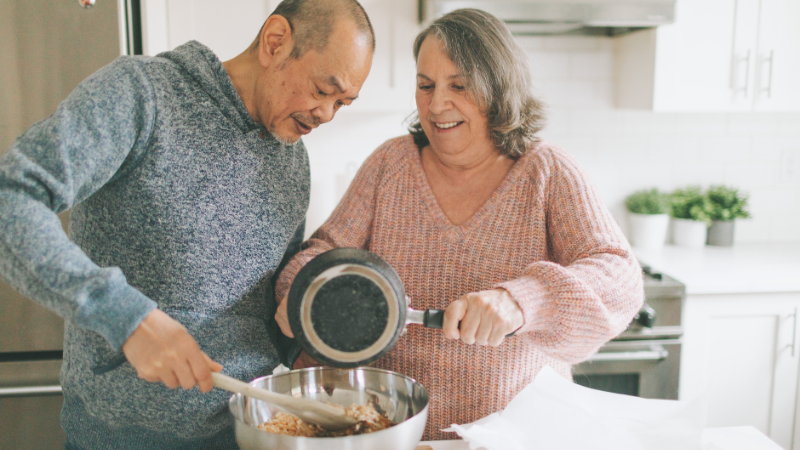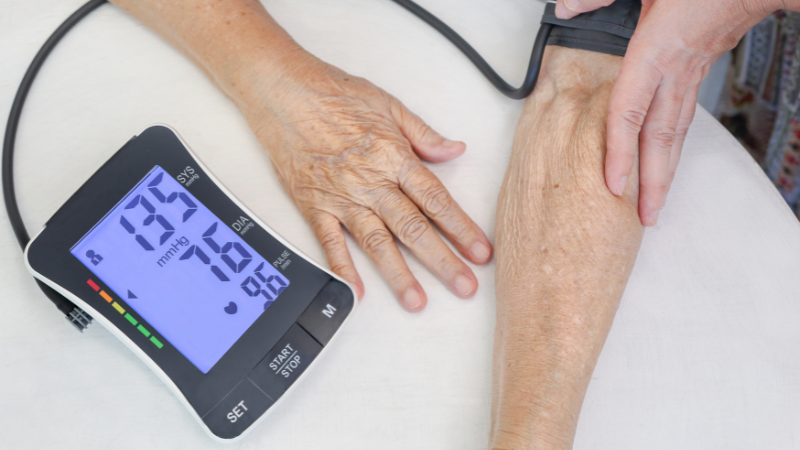
Sodium is a vital electrolyte for the aging body, yet low sodium levels often affect seniors. In order to regulate healthy water content in the cells and tissue, sodium levels must be optimum. Following are ways that seniors and their caregivers can increase the former’s sodium levels.
How important is sodium?
Blood salt levels should remain at optimal levels to prevent health problems. Sodium electrolytes help control the amount of water in cells and their surrounding tissue. When sodium levels plunge dangerously low, a condition called hyponatremia develops.
Sodium is critical to facilitate effective muscle activity and neuron health. Seniors need adequate amounts of sodium in their daily diet to regulate their blood pressure. Normal sodium levels in a healthy older adult range from 135 to 145 mEq/L. Hyponatremia is diagnosed when values fall below 135 mEq/L.
What health issues does low sodium cause?
Low sodium levels in the elderly can cause a wide range of health issues if left untreated. Older adults may experience increased blood pressure, weakened muscular tissue, or imbalanced bodily fluids. Additional repercussions of hyponatremia include lethargy, confusion, and seizures.

Why do seniors experience low sodium?
Low sodium levels are prevalent among the aging population. They may take medications, such as antidepressants or diuretics, that contribute to low blood salt levels. Some seniors may suffer from inadequate thyroid or adrenal function, which can cause low sodium levels.
Chronic diseases are also responsible for low blood sodium in the elderly. Lung cancer, for example, is one malignancy that causes hyponatremia. Urinary tract infections and decreased renal, cardiac, or liver performance also contribute. Pneumonia, which leads to dehydration, is another cause.
Even drinking too much water can cause low sodium levels, since it dilutes sodium in the bloodstream. When seniors overexercise, for instance, they may rapidly consume excessive amounts of water. Nausea, vomiting, and diarrhea are additional common contributors to hyponatremia.
What are symptoms of low sodium in seniors?
Older adults display several symptoms when they are affected by low sodium levels. Physical symptoms include nausea with vomiting, fatigue, muscle cramps or weakness, headaches and seizures. Other symptoms include confusion, irritability, restlessness and loss of energy. Coma occurs in severe cases.
How do seniors increase their sodium levels?
Caregivers can help their aging loved ones increase their sodium levels in several ways. One way is to reduce their consumption of water. Reducing the senior’s water intake can help increase the salt levels in their body. Hydration is still important, so simply cut back on water and other fluids.
Seniors may take too many diuretics (these are also known as water pills, which increase the production of urine). Limiting the number of diuretics that the older adult takes can help with sodium levels. Talk to a physician about drug alternatives that will not adversely affect sodium levels.
Salt is a rich source of sodium, so increasing the senior’s salt intake can boost sodium levels. Prior to increasing the salt in the senior’s diet, discuss it with a physician. It’s important to monitor salt consumption, because high levels can be detrimental to the older adult’s health.
What foods are recommended to boost sodium levels?

Sodium-rich foods increase the aging body’s sodium levels. Many common foods contain high salt levels and help fight sodium deficiency. Breakfast foods, like bread and granola, are good sources of sodium. Rather than cereal, serve oatmeal with fresh berries, which is healthier.
Midday meals might consist of sodium-rich foods, like pasta or rice. Add a helping of sauerkraut, which is also infused with plenty of sodium. Finish off lunch with a banana, also a good source of sodium. Sodium-rich snacks may consist of cottage cheese or salted nuts.
When serving snacks to seniors, choose low-fat versions. Avoid snacks that are high in fat to maintain a healthy diet. Potato chips, which are loaded with salt, are an unhealthy food choice and may cause the aging adult to drink too much water afterward.
Beverages may include vegetable juices. Tomato juice, for instance, contains 878 milligrams of sodium per eight-ounce glass. A vegetable juice cocktail has 887 milligrams of sodium per serving. Avoid low-sodium versions, as they fail to add the requisite amount of sodium per serving.
Seniors also have the option to simply add more salt to foods. Shaking the salt shaker over dishes helps return salt levels to a normal range. When using table salt, aim to give meals a salty flavor—do not oversalt to the point where the food is no longer enjoyable.
Caregivers should support the dietary needs of their care recipients. Adhere to the diet that the senior’s physician recommends to bring their salt levels back to normal. Preparing meals in accordance with a care recipient’s dietary guidelines is a responsibility of caregivers at Assisting Hands Home Care.
As a highly rated elder care provider, Assisting Hands Home Care is positioned to meet all the non-medical needs of seniors. Our professionals not only shop for nutritious foods and prepare healthy meals, but we give medication reminders and promote a hygienic home with light housekeeping.
Caregiver services include transportation to local areas, like the doctor’s office and senior centers. We accompany the senior throughout the outing, if necessary, to ensure confidence and safety. Help with hygiene tasks, like bathing, grooming, toileting, and dressing, are a part of our daily responsibilities.

Our home care agency offers families numerous care options. Caregivers are available for respite care, 24-hour care, live-in care, and overnight care. After your loved one is discharged from the hospital, our post-surgical care will be helpful. We also provide compassionate memory care and hospice care.
Choose Assisting Hands Home Care to promote the health of your aging loved one in Batavia, Illinois, and the surrounding communities. We are privileged to support seniors in their daily lives and allow them to age in place. Schedule a free in-home consult and learn about quality senior home care at (630) 948-8193 .
